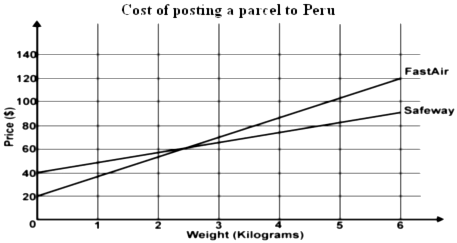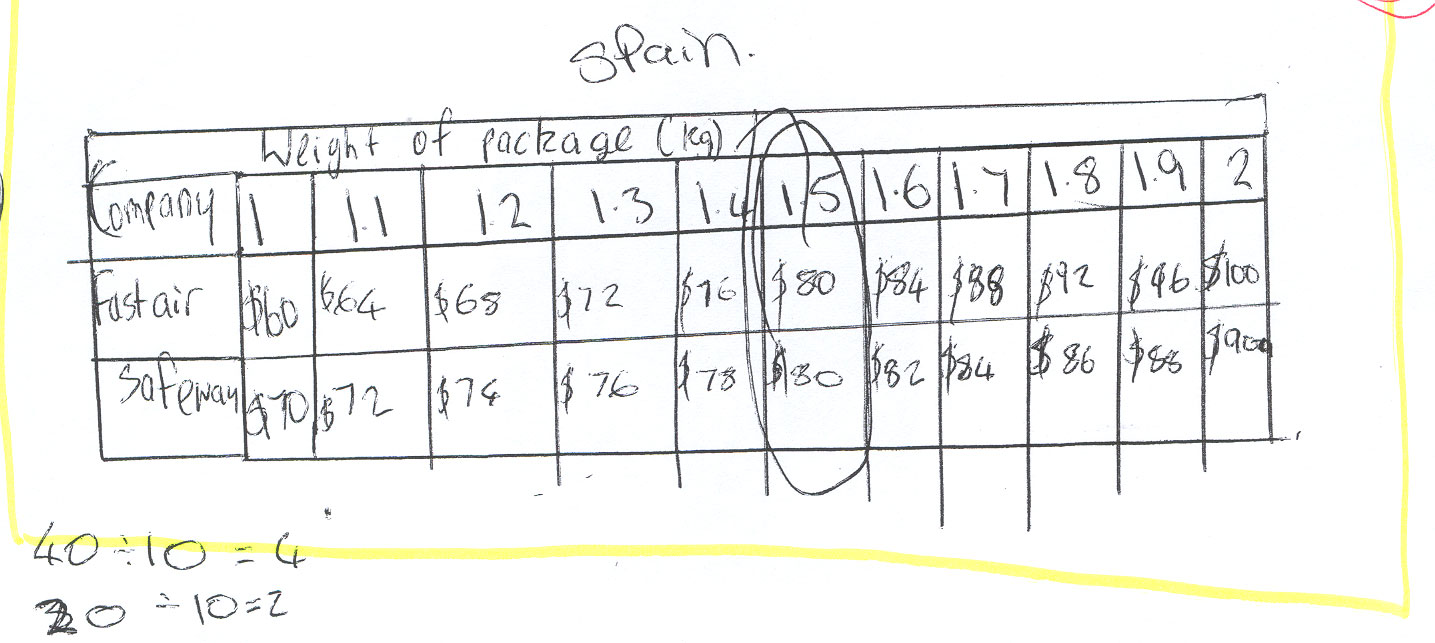Post a parcel
This task is about comparing costs of sending parcels for two different companies.
Two courier companies charge different rates to send parcels by airmail.
| a) | This graph shows the price each company charges for sending a parcel to Peru. |

Show how to use this graph to find the weight of a parcel that both companies would charge the same amount of money to send to Peru.You may draw on the graph or write what you would do in the box below.
|
|
b)
|
This table shows the price each company charges for sending a parcel to Tonga. Weights that are part kilograms are charged proportionally (e.g., each 0.1 kg will cost an extra $4 with FastAir). |
| Company | Weight of parcel (in kilograms) | |||||
| 0 | 1 | 2 | 3 | 4 | 5 | |
| FastAir | $20 | $60 | $100 | $140 | $180 | $220 |
| SafeWay | $50 | $70 | $90 | $110 | $130 | $150 |
|
Show how to use this table to find the weight of a parcel that both companies would charge the same amount of money to send to Tonga (give your answer to 1 d.p).
|
|
| c) |
These equations show the price each company charges for sending a parcel to Tāmaki Makaurau.
FastAir: Cost = 7x + 14
SafeWay: Cost = 4x + 35
where x is the weight of a parcel.
Show how to use these equations to find the weight of a parcel that both companies would charge the same amount of money to send to Tāmaki Makaurau.
|
|

















